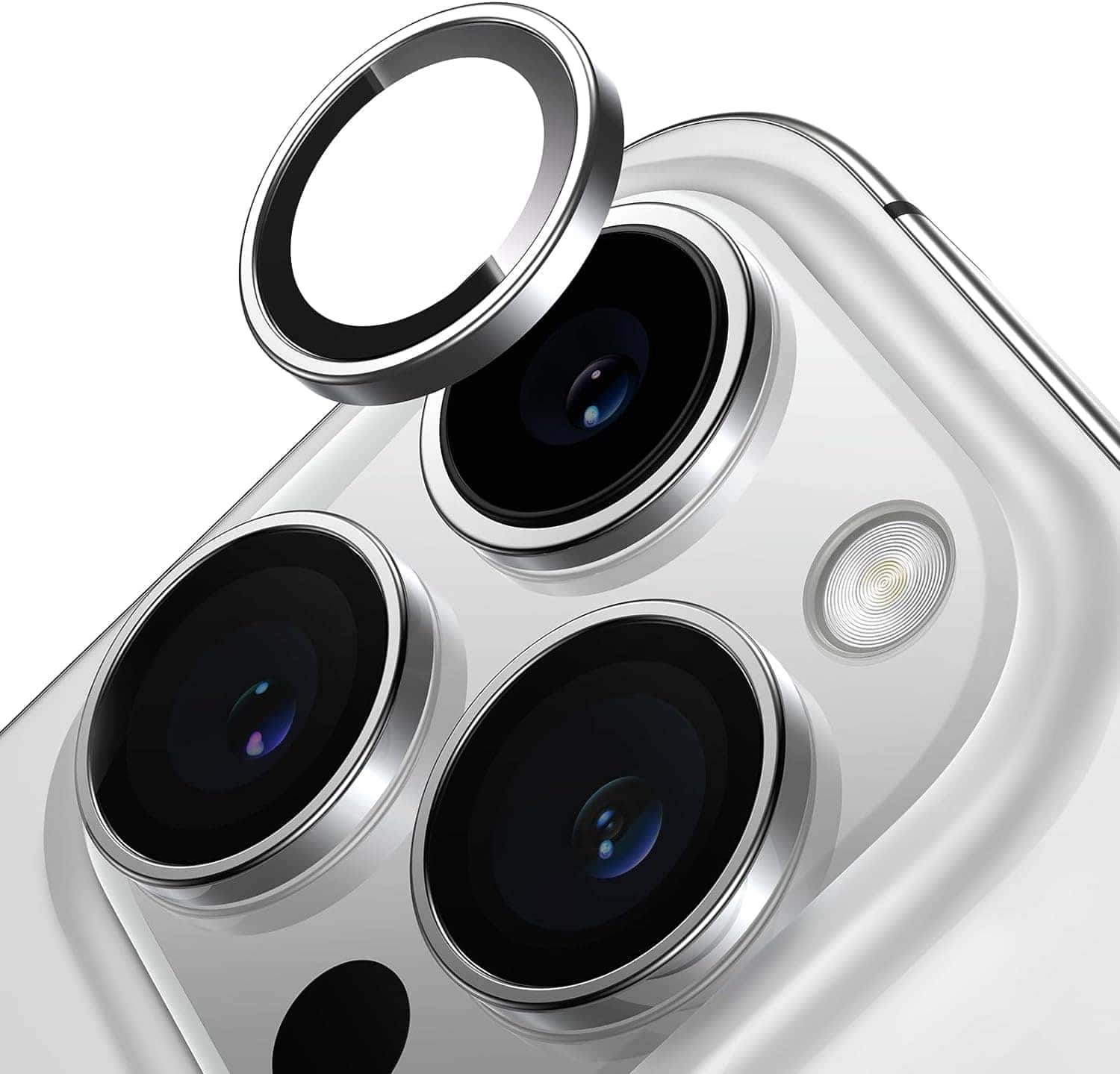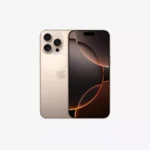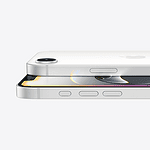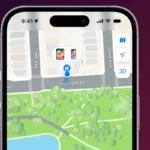Protecting the camera lens on an iPhone is crucial for preserving the device’s photo quality. Apple’s latest models feature advanced camera technology that captures sharp, clear images. To consistently achieve high-quality results, it’s important to shield the lens from scratches, dirt, and other potential damage. A scratched or dirty lens can significantly impact photo quality, so protecting the lens is an essential part of iPhone care. Selecting the right lens protector is crucial, as there are various options available, ranging from simple adhesive protectors to more advanced solutions with additional features.
When choosing a lens protector, consider factors such as material durability, clarity, and how well the protector fits around the camera bump. A well-chosen lens protector should shield the camera without compromising photo quality or the phone’s sleek design. Additionally, regular maintenance of the camera lens is essential. It’s important to keep the lens clean without causing scratches. Use a soft microfiber cloth and, if necessary, a dedicated lens cleaning solution. Gentle cleaning techniques will help maintain the lens in good condition for taking photos.
Protecting Your Investment: Safeguarding Your Camera Lens
The iPhone boasts an impressive camera system with advanced lenses on the back of the phone designed to capture high-resolution pictures. However, these advanced lenses are susceptible to damage, especially scratching. Protecting your camera lens is vital if you want to maintain pristine image and video quality. Here are some effective ways to safeguard your iPhone’s camera:
Camera Lens Protectors
Camera lens protectors offer a simple and affordable solution. These are thin layers of tempered glass or other durable materials that adhere directly over your camera lenses.
Pros:
- Scratch and crack resistance
- Easy to install
- Affordable
Cons:
- Can potentially impact image quality if not high-quality
- May need replacement over time
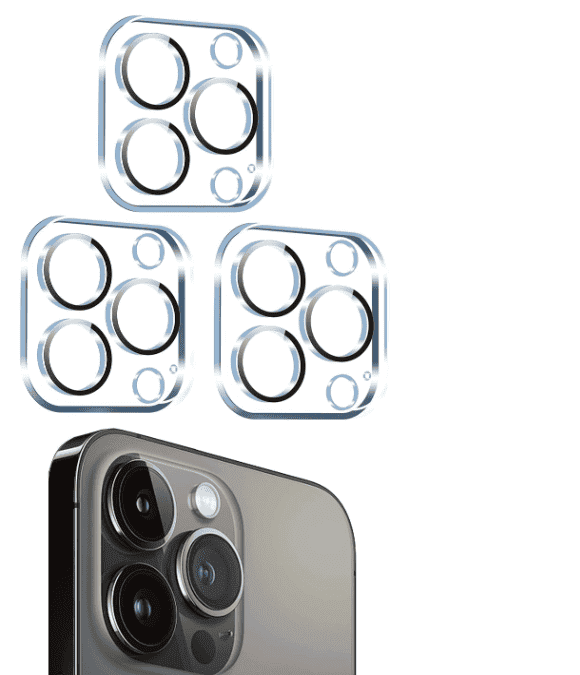
Cases with Built-in Camera Protection
Many phone cases feature raised edges around the camera module, creating a buffer that helps prevent scratches when you lay your phone down. Some cases even have built-in sliding covers for added lens protection.
Pros:
- Protection for your entire phone
- Convenient camera covers on select models
Cons:
- Can be bulky
- Sliding covers might not be durable
General Care and Maintenance
Beyond specific protectors, practicing good habits helps keep your camera lenses in top shape:
- Clean your lenses: Utilize a microfiber cloth to gently remove smudges and fingerprints.
- Avoid harsh surfaces: Don’t place your phone directly on rough or abrasive surfaces.
- Use a carrying pouch: Consider a pouch for added protection when transporting your phone.
Popular Product Options
Here’s a table outlining some popular camera lens protection options for your iPhone:
| Product Name | Type | Features |
|---|---|---|
| Spigen Camera Lens Screen Protector | Tempered Glass Protector | 9H Hardness, EZ Fit Tray, Oleophobic Coating |
| Case-Mate Camera Lens Protector | Tempered Glass Protector | Double-Tempered Glass, Scratch & Fingerprint Resistant |
| PolarPro LiteChaser 15 Case with Aluminum Defender | Rugged Case | Full Aluminum Camera Cover, Quick Swap System, Filter Compatibility |
| Wildflower Camera Bling | Decorative Protector | Adds Style, Scratch-Resistant |
Remember, choosing the best protection for your iPhone camera depends on your individual needs and preferences.
Key Takeaways
- Lens protection for the iPhone is critical for photo quality.
- Selection of a lens protector should focus on material quality and design compatibility.
- Regular cleaning with appropriate tools preserves the camera lens condition.
Choosing the Right Lens Protector
Protecting the lens of your iPhone is crucial to maintain picture quality. A good lens protector combines durability with compatibility and clarity.
Understanding Material Quality and Durability
The best lens protectors are typically made of tempered glass or aluminum alloy. Tempered glass protectors often come with a 9H hardness rating. This means they can resist scratches from items as sharp as a knife. An oleophobic coating is a plus. This coating keeps fingerprints and smudges at bay, ensuring your photos stay clear. Materials like these keep your lens safe from daily wear and tear.
Compatibility with iPhone
Lens protectors should fit the unique dimensions of the iPhone. Some popular brands include ESR Camera Lens Protector, Spigen Camera Lens Screen Protector, and Casetify Camera Lens Protector. These brands design protectors that align perfectly with the phone’s lens and flash, maintain high transparency, and ensure light transmission is unaltered.
Installation Ease and Clarity Maintenance
Look for lens protectors that advertise easy installation. They should come with clear instructions and all you need for a bubble-free application. Adhesives should hold the protector firmly without leaving residue. A protector’s clarity is key for it to be nearly invisible. You want to maintain the original image quality of your phone’s camera. Brands like Jetech Camera Lens Protector and Torras Camera Lens Protector often focus on these aspects.
Preserving Photo and Camera Quality
Protecting your camera lens ensures that photo and camera quality remain top-notch. Lens protectors can guard against damage while maintaining image clarity.
Impact of Protectors on Image and Photo Quality
Different iPhone models come with advanced cameras, and Camera lens protectors are essential for preserving the capabilities of these cameras. One key benefit is exceptional scratch resistance, which helps keep images clear over time. It’s important for users to choose protectors that provide full coverage without compromising the lens’s ability to capture light. Features like an anti-glare aperture can reduce lens flare, ensuring that photos retain their intended color and contrast. An example of such a protector is the Ailun 3-Pack Camera Lens Protector, which offers clarity without affecting photo quality.
Prevention of Scratches, Smudges, and Fingerprints
Daily use exposes phone cameras to the risk of scratches, fingerprints, and smudges. To mitigate this, protectors often have an oleophobic coating. This makes them resistant to oil and helps prevent fingerprint marks. It’s important to choose lightweight protectors that don’t add unnecessary bulk. Cleaning the lens with a microfiber cloth can keep it free from smudges and maintain image sharpness. For a clear visual experience, it’s essential to use protectors that don’t trap dirt or cause fogging and reflections.
Frequently Asked Questions
This section aims to address common concerns about protecting the camera lens of iPhone, iPhone Pro, and iPhone Pro Max models, ensuring clarity and longevity of the device’s photography capabilities.
What are the best camera lens protectors for the iPhone Pro Max?
The Spigen camera lens screen protector receives high praise for its build quality and durability. It stands out as a top choice for iPhone Pro Max users looking for reliable lens protection.
How can I prevent scratches on my iPhone Pro’s camera lens?
Using a lens protector made from high-quality materials such as tempered glass or hard plastic is a practical way to shield the lens from scratches. Regular cleaning with a microfiber cloth also helps maintain the lens surface.
Are there any recommended methods to protect the camera lens of an iPhone without compromising photo quality?
Opt for a camera lens protector that is designed to be clear and thin, which will provide protection without affecting your camera’s ability to capture crisp and clear images.
Do camera lens protectors for the iPhone affect the image quality?
A properly designed and applied camera lens protector should not interfere with image quality. High-quality protectors are usually ultra-thin and transparent to ensure that the camera’s performance remains unaffected.

